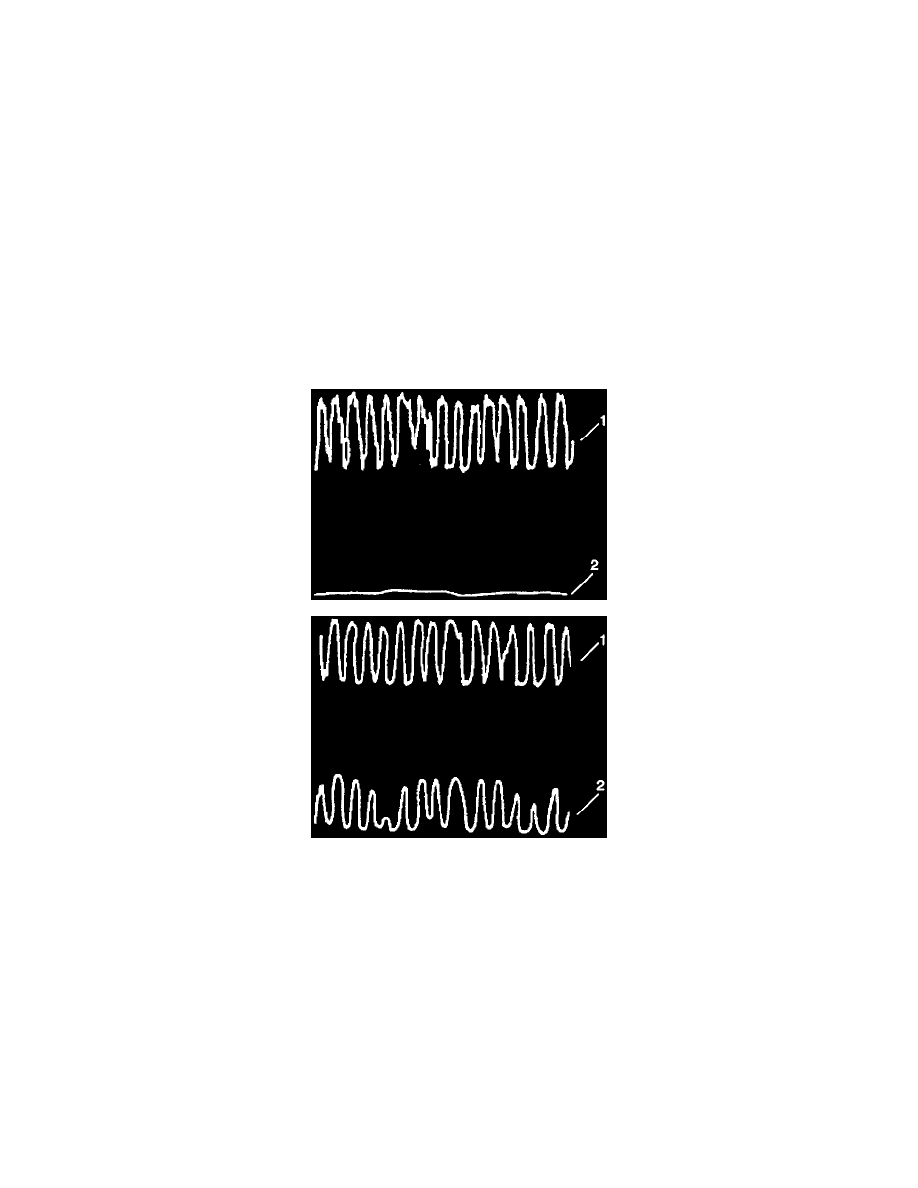Hombre S Regular Cab 2WD L4-2.2L CPC (1998)

Catalyst Monitor Diagnostic Operation
The OBD II catalyst monitor diagnostic measures oxygen storage capacity. In order to do this, the heated sensors are installed before and after the
Three-Way Catalyst (TWC). The voltage variations between the sensors allow the control module to determine the catalyst emission performance.
As a catalyst becomes less effective in promoting chemical reactions, the capacity of the catalyst to store and release oxygen generally degrades.
The OBD II catalyst monitor diagnostic is based on a correlation between conversion efficiency and oxygen storage capacity.
A good catalyst (e.g. 95% hydrocarbon conversion efficiency) shows a relatively flat output voltage on the post-catalyst Heated Oxygen Sensor
(HO2S). A degraded catalyst (65% hydrocarbon conversion) shows a greatly increased activity in output voltage from the post catalyst HO2S.
The post-catalyst HO2S 2 is used to measure the oxygen storage and release capacity of the catalyst. A high oxygen storage capacity indicates a
good catalyst; low oxygen storage capacity indicates a failing catalyst. The TWC, HO2S 2, and HO2S 3 must be at operating temperature in order
to achieve correct oxygen sensor voltages like those shown in the Post-Catalyst HO2S 3 Outputs graphic.
The catalyst monitor diagnostic is sensitive to the following conditions:
-
Exhaust leaks
-
HO2S Contamination
-
Alternate fuels
Exhaust system leaks may cause the following results:
-
Prevent a degraded catalyst from failing the diagnostic
-
Cause a false failure for a normally functioning catalyst
-
Prevent the diagnostic from running Some of the contaminants that may be encountered are phosphorus, lead, silica, and sulfur. The presence
of these contaminants prevents the TWC diagnostic from functioning properly.
Three-Way Catalyst Oxygen Storage Capacity
The control module must monitor the Three-Way catalyst system (TWC) for efficiency. In order to accomplish this, the control module monitors
the pre-catalyst and post-catalyst oxygen sensors. When the TWC is operating properly, the post-catalyst (2) oxygen sensor will have significantly
less activity than the pre-catalyst (1) oxygen sensor. The TWC stores the oxygen as needed during its normal reduction and oxidation process.
The TWC releases oxygen as needed during its normal reduction and oxidation process. The control module calculates the oxygen storage
capacity using the difference between the pre-catalyst and post-catalyst oxygen sensor voltage levels. Whenever the voltage levels of the
post-catalyst (2) oxygen sensor nears the voltage levels that of the pre-catalyst (1) oxygen sensor, the efficiency of the catalyst is degraded.
Stepped or staged testing levels allow the control module to statistically filter the test information. This prevents falsely passing or falsely failing
the oxygen storage capacity test. The calculations performed by the on-board diagnostic system are very complex. For this reason, do not use post
catalyst oxygen sensor activity in order to determine the oxygen storage capacity unless directed by the electronic service information.
Three stages are used in order to monitor catalyst efficiency. Failure of the first stage indicates that the catalyst requires further testing in order to
determine catalyst efficiency. Failure of the second stage indicates that the catalyst may be degraded. The third stage then looks at the inputs from
the pre and post 02 sensors more closely before determining if the catalyst is indeed degraded. This further statistical processing is done in order
to increase the accuracy of the oxygen storage capacity type monitoring. Failing the first (stage 0) or the second (stage 1) test Does Not indicate a
failed catalyst. The catalyst may be marginal or the fuel sulfur content could be very high.
Aftermarket HO2S characteristics may be different from the original equipment manufacturer sensor. This may lead to a false pass or a false fail
of the catalyst monitor diagnostic. Similarly, if an Aftermarket catalyst does not contain the same amount of cerium as the original part, the
